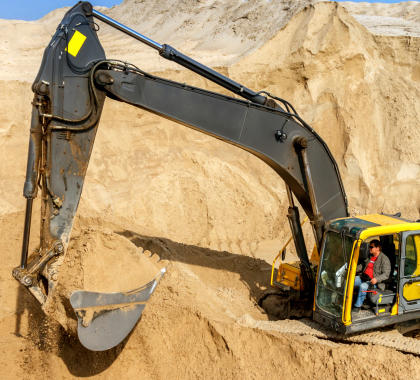In an effort to ensure the continued viability and profitability of Idaho’s economically critical mining industry, state lawmakers and policymakers recently enacted the first major changes to the state’s mining law in 50 years.
Some of the new requirements took effect on August 1, and the Idaho Department of Lands is working on additional changes to its rules to implement statutory changes adopted by the legislature this year.
The agency will seek public comments before bringing the final revisions to lawmakers for their approval in the 2020 legislative session.
The changes affect the guarantees mining companies must provide to ensure sites are reclaimed after extraction concludes and add a new class of mines to those requiring remediation or reclamation.
Adding Assurance Options
The new law expands the types of financial arrangements that qualify as proof a mining operation has the funds necessary to cover its clean-up and potential disaster liabilities, which should make it easier for mining companies to get financing, says Fred Birnbaum, vice president of the Idaho Freedom Foundation.
“The new law expands financial assurance for mining operations beyond the existing bond requirement to include a surety bond, a corporate guarantee, a letter of credit, a certificate of deposit, or a trust fund,” Birnbaum said. “These changes will provide companies with greater flexibility while maintaining assurances to the state there will be monies to pay for reclamation efforts and mitigate environmental impacts from mining and related activities.
“For example, if a company has a letter of credit from an investor, likely offered based on anticipated future profits from mining, it could start operations without having to raise the capital required to show financial assurance,” Birnbaum said.
Freeing Up Resources
Another change to Idaho’s mining law allows companies to reclaim money in steps as they complete their reclamation requirements, Birnbaum says. If the Idaho Land Board determines a company has completed a portion of the requirements properly, it will reduce the financial assurance required by the amount completed.
“This change would allow companies to receive portions of their financial assurance back as they make progress, rather than having to wait until the very end to obtain their complete bond back,” Birnbaum said.
The new law increases bond requirements for larger mines and mine facilities using cyanide in their operations. The previous caps of $15,000 per acre and $5 million per facility will apply only to mines affecting fewer than five acres. Larger mines will now have to provide financial assurance in an amount “based on the estimated reasonable costs of completing remediation.”
In addition, the mining law revisions apply to underground mines the same responsibility for reclamation for their impact on the surface as applies to surface mines. These provisions will not require underground mines to fill, reclaim, or refill underground shafts, tunnels, or other underground facilities.
Averting Federal Intrusion
Although many of the changes Idaho is making to its mining laws reflect mining practices that are already the norm in the industry, the changes also offer important legal protections, says Benjamin Davenport, executive vice president of the Idaho Mining Association.
“Many of the changes reflect industry and regulatory practices that have evolved with modern-day mining but had not been reflected in statute,” Davenport said. “The larger issue, though, is continuing threats from federal litigation, federal regulators, and groups opposed to mining who might have used Idaho’s outdated legal structure as a wedge to force unwanted changes on the Idaho mining community.
“It is important for our statute to match current standards using best management practices so it is defensible both in perception as well as from legal challenges,” Davenport said. “The statutory changes attempt to address those threats by creating an Idaho standard that works for industry while protecting the taxpayers from potential liabilities.”
Protecting Taxpayers, Miners, Land
The new law protects taxpayers and mining companies alike, says Davenport.
“By moving to an actual cost estimation tool in Idaho, rather than a set dollar amount per acre, we have provided more certainty that taxpayers won’t be left with a liability, matched current industry practices, and matched what relevant federal agencies already require,” Davenport said.
“The 30-year post-closure management plans also reflect industry standards and protect the taxpayer in the event there are long-term management needs after a plan of operations is completed,” Davenport said.
Changes: Obama to Trump
During Barack Obama’s presidency, the federal government began to encroach on states’ mining authority, citing perceived gaps in state regulation, says Davenport.
“In the final month of the Obama administration, the U.S. Environmental Protection Agency (EPA) proposed a new financial assurance rule that would have been detrimental to the mining industry nationwide,” Davenport said. “Under those rules, only large, multinational corporations would have had the financial resources to finance mine construction, operation, and closure.
“Fast-forward one year, and EPA under the Trump administration decided not to proceed with the rule changes, after concluding most states and other federal agencies already adequately addressed financial assurance for mines and could do a better job of regulating industry than EPA,” Davenport said.
Davenport says Idaho’s legislature and regulators identified gaps in in state mining regulations, including the surface impacts of underground mines, long-term post-closure management, and actual cost estimation for reclamation work, virtually forcing them to update their ancient mining laws to protect the industry’s continued viability.
“It was important for Idaho to close these perceived gaps going forward,” Davenport said.
Duggan Flanakin ([email protected]) writes from Austin, Texas.




